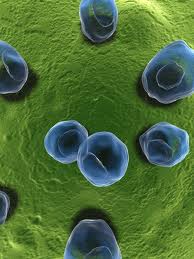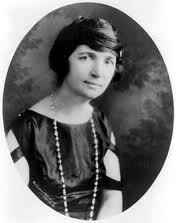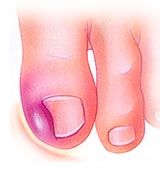 Medical errors can occur anywhere in the health care system: In hospitals, clinics, surgery centers, doctors' offices, nursing homes, pharmacies, and patients' homes. Errors can involve medicines, surgery, diagnosis, equipment, or lab reports. They can happen during even the most routine tasks, such as when a hospital patient on a salt-free diet is given a high-salt meal. One in seven Medicare patients in hospitals experience a medical error.
Medical errors can occur anywhere in the health care system: In hospitals, clinics, surgery centers, doctors' offices, nursing homes, pharmacies, and patients' homes. Errors can involve medicines, surgery, diagnosis, equipment, or lab reports. They can happen during even the most routine tasks, such as when a hospital patient on a salt-free diet is given a high-salt meal. One in seven Medicare patients in hospitals experience a medical error.
Most errors result from problems created by today's complex health care system. But errors also happen when doctors and patients have problems communicating. These tips tell what you can do to get safer care.
What You Can Do to Stay Safe
The best way you can help to prevent errors is to be an active member of your health care team. That means taking part in every decision about your health care. Research shows that patients who are more involved with their care tend to get better results.
Medicines
1. Make sure that all of your doctors know about every medicine you are taking. This includes prescription and over-the-counter medicines and dietary supplements, such as vitamins and herbs. It's a good idea to bring all of your medicine/supplement bottles to your medical visits.
2. Make sure your doctor knows about any allergies and adverse reactions you have had to medicines. This can help you to avoid getting a medicine that could harm you.
3. When your doctor writes a prescription for you, make sure you can read it. If you cannot read your doctor's handwriting, your pharmacist might not be able to either.
4. Ask for information about your medicines in terms you can understand—both when your medicines are prescribed and when you get them:
- What is the medicine for?
- How am I supposed to take it and for how long?
- What side effects are likely? What do I do if they occur?
- Is this medicine safe to take with other medicines or dietary supplements I am taking? What food, drink or activities should I avoid while taking it?
5. When you pick up your medicine from the pharmacy, ask: Is this the medicine that my doctor prescribed? (It's a good idea to look at the medicine--my husband once got a different shaped pill that ended up being a narcotic instead of his allergy medicine!)
6. If you have any questions about the directions on your medicine labels, ask. For example, ask if "four times daily" means taking a dose every 6 hours around the clock or just during regular waking hours.
7. Ask your pharmacist for the best device to measure your liquid medicine. For example, many people use household teaspoons, which often do not hold a true teaspoon of liquid. Special devices, like marked syringes, help people measure the right dose.
8. Ask for written information about the side effects your medicine could cause. If you know what might happen, you will be better prepared if it does or if something unexpected happens.
Hospital Stays
1. If you are in a hospital, consider asking all health care workers who will touch you whether they have washed their hands. Handwashing can prevent the spread of infections in hospitals.
2. When you are being discharged from the hospital, ask your doctor to explain the treatment plan you will follow at home. This includes learning about your new medicines, making sure you know when to schedule follow-up appointments, and finding out when you can get back to your regular activities. It is important to know whether or not you should keep taking the medicines you were taking before your hospital stay. Getting clear instructions may help prevent an unexpected return trip to the hospital.
Surgery
1. If you are having surgery, make sure that you, your doctor, and your surgeon all agree on exactly what will be done. Having surgery at the wrong site (for example, operating on the left knee instead of the right) is rare. But even once is too often. The good news is that wrong-site surgery is 100 percent preventable. Surgeons are expected to sign their initials directly on the site to be operated on before the surgery.
2. If you have a choice, choose a hospital where many patients have had the procedure or surgery you need. Patients tend to have better results when they are treated in hospitals that have a great deal of experience with their condition.
Other Steps
1. Speak up if you have questions or concerns. You have a right to question anyone who is involved with your care.
2. Make sure that someone, such as your primary care doctor, coordinates your care. This is especially important if you have many health problems or are in the hospital.
3. Make sure that all your doctors have your important health information. Do not assume that everyone has all the information they need.
4. Ask a family member or friend to go to appointments with you. Even if you do not need help now, you might need it later.
5. . Know that "more" is not always better. It is a good idea to find out why a test or treatment is needed and how it can help you. You could be better off without it.
6. . If you have a test, do not assume that no news is good news. Ask how and when you will get the results.
7 . Learn about your condition and treatments by asking your doctor and nurse and by using other reliable sources. For example, treatment options based on the latest scientific evidence are available from the Effective Health Care Web site (http://www.effectivehealthcare.ahrq.gov/options). Ask your doctor if your treatment is based on the latest evidence.
Source: 20 Tips to Help Prevent Medical Errors. Patient Fact Sheet. AHRQ Publication No. 11-0089, September 2011. Agency for Healthcare Research and Quality, Rockville, MD. http://www.ahrq.gov/consumer/20tips.htm

 Just 38 percent of sexually active young women were screened for
Just 38 percent of sexually active young women were screened for 
 Maintaining a healthy lifestyle from young adulthood into your 40s is strongly associated with low cardiovascular disease risk in middle age, according to a new Northwestern Medicine® study.
Maintaining a healthy lifestyle from young adulthood into your 40s is strongly associated with low cardiovascular disease risk in middle age, according to a new Northwestern Medicine® study. upplements are a $28 billion dollar business in America. Thanks to 1994's Hatch Act, the Dietary Supplement Health and Education Act (DSHEA), pushed through Congress and released upon a then-unprotesting public by Utah's Sen. Orrin Hatch (R-UT), substances which may be benign, toxic, and everything in between, as long as they are sold as "dietary nutritional supplements," get a virtual free pass.
upplements are a $28 billion dollar business in America. Thanks to 1994's Hatch Act, the Dietary Supplement Health and Education Act (DSHEA), pushed through Congress and released upon a then-unprotesting public by Utah's Sen. Orrin Hatch (R-UT), substances which may be benign, toxic, and everything in between, as long as they are sold as "dietary nutritional supplements," get a virtual free pass. Women’s History Month is an important time of reflection and celebration for all Americans. We recognize the extraordinary accomplishments of women throughout history, and we celebrate the power of their vital contributions to science, medicine and women's empowerment. Here are a just a few of the many accomplishments done by women in the last century and a half. Many of them were true pioneers in women's health!
Women’s History Month is an important time of reflection and celebration for all Americans. We recognize the extraordinary accomplishments of women throughout history, and we celebrate the power of their vital contributions to science, medicine and women's empowerment. Here are a just a few of the many accomplishments done by women in the last century and a half. Many of them were true pioneers in women's health! Babies are not able to metabolize or excrete caffeine very well, so a breastfeeding mother's consumption of caffeine may lead to caffeine accumulation and symptoms such as wakefulness and irritability, according to an interview with expert Ruth Lawrence, MD, published in
Babies are not able to metabolize or excrete caffeine very well, so a breastfeeding mother's consumption of caffeine may lead to caffeine accumulation and symptoms such as wakefulness and irritability, according to an interview with expert Ruth Lawrence, MD, published in  High heel shoes can cause a number of foot problems, yet most women aren’t willing to give their shoes the boot, according to podiatrists at Loyola University Health System (LUHS). Ingrown toenails are among the most common problems that result from high heels. This condition, also known as onychocryptosis, occurs when the toes compress together making the big toenails grow into the skin.
High heel shoes can cause a number of foot problems, yet most women aren’t willing to give their shoes the boot, according to podiatrists at Loyola University Health System (LUHS). Ingrown toenails are among the most common problems that result from high heels. This condition, also known as onychocryptosis, occurs when the toes compress together making the big toenails grow into the skin. If pain, swelling and discharge develop, the toe is likely infected. It will need to be treated by a podiatrist who may remove a portion of the affected nail to aid in treating the infection. If the condition recurs or persists, permanent removal of the nail can be accomplished with a minor, in-office surgical procedure.
If pain, swelling and discharge develop, the toe is likely infected. It will need to be treated by a podiatrist who may remove a portion of the affected nail to aid in treating the infection. If the condition recurs or persists, permanent removal of the nail can be accomplished with a minor, in-office surgical procedure. Menopausal hormone therapy doesn't have to follow "the lowest dose for the shortest time" strategy for all women anymore, the North American Menopause Society said today. The group endorsed a flexible approach to duration that takes into account the type and timing of therapy and individual patient characteristics in a statement in its journal, Menopause.
Menopausal hormone therapy doesn't have to follow "the lowest dose for the shortest time" strategy for all women anymore, the North American Menopause Society said today. The group endorsed a flexible approach to duration that takes into account the type and timing of therapy and individual patient characteristics in a statement in its journal, Menopause. The bigger clinical impact from the guidelines is likely to come from its conclusions on cardio- and cerebrovascular risks, she suggested. With estrogen alone, women in their 50s in the Women's Health Initiative actually had a reduced risk of combined endpoints including coronary heart disease and total myocardial infarction.
The bigger clinical impact from the guidelines is likely to come from its conclusions on cardio- and cerebrovascular risks, she suggested. With estrogen alone, women in their 50s in the Women's Health Initiative actually had a reduced risk of combined endpoints including coronary heart disease and total myocardial infarction.